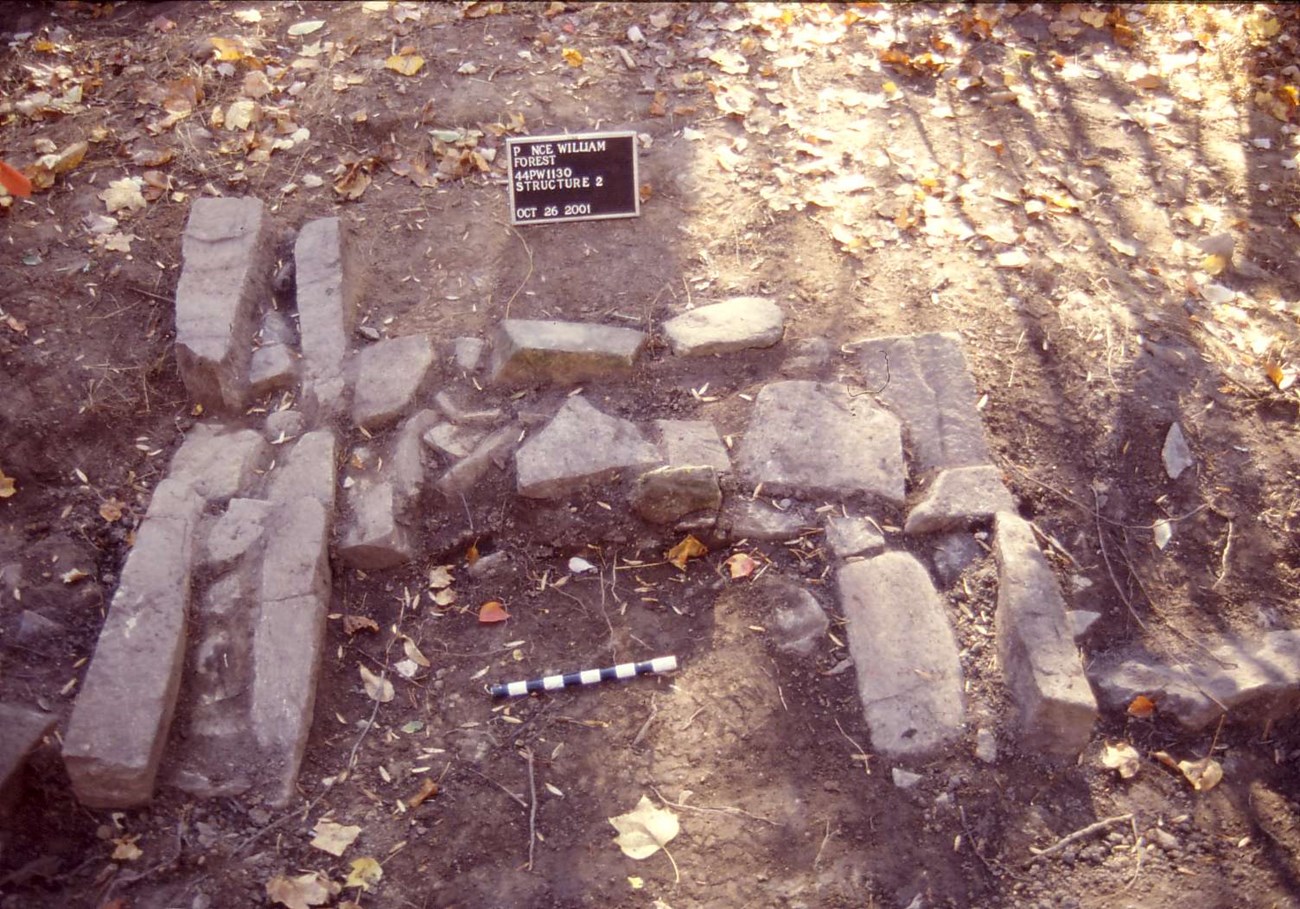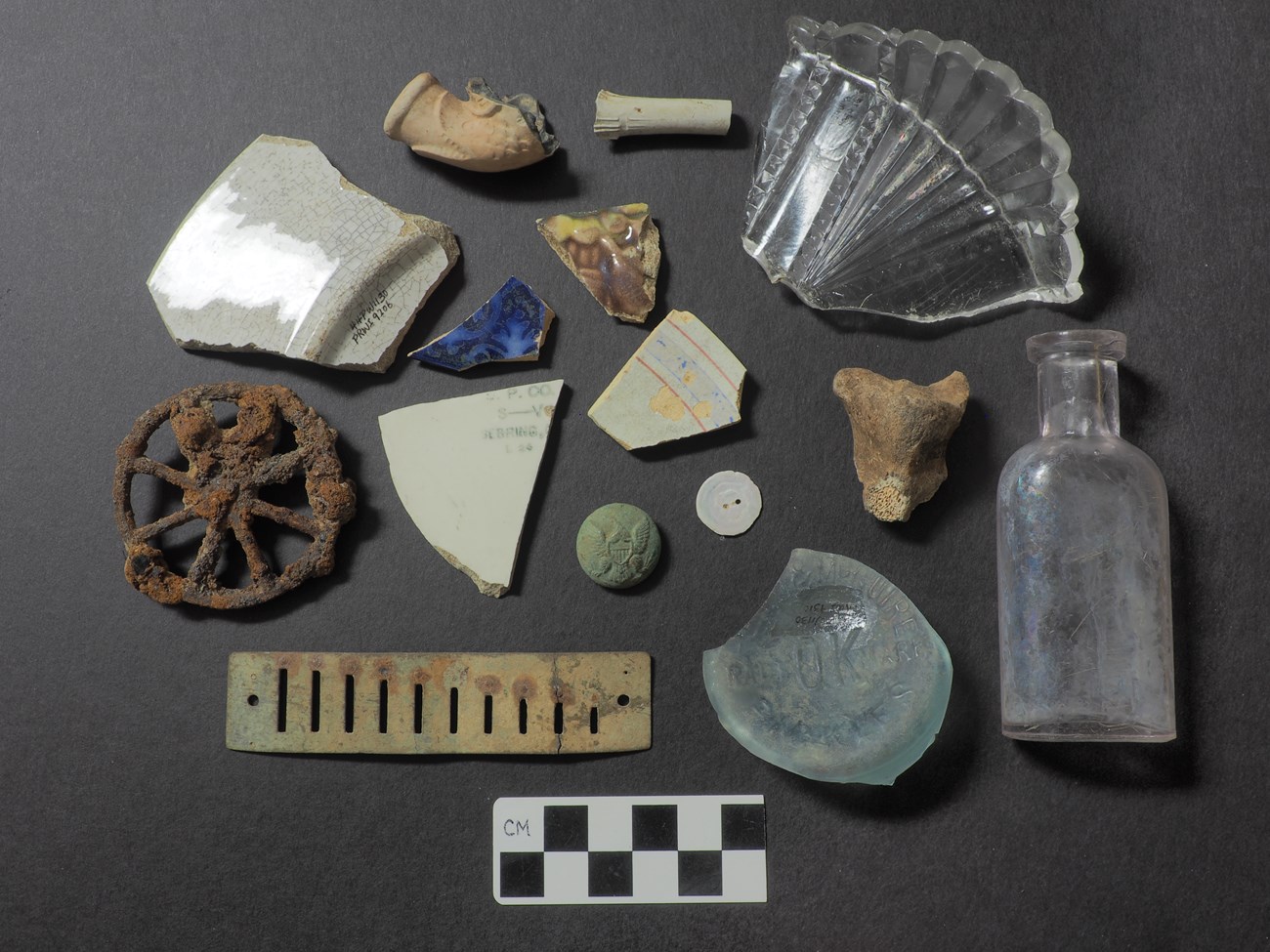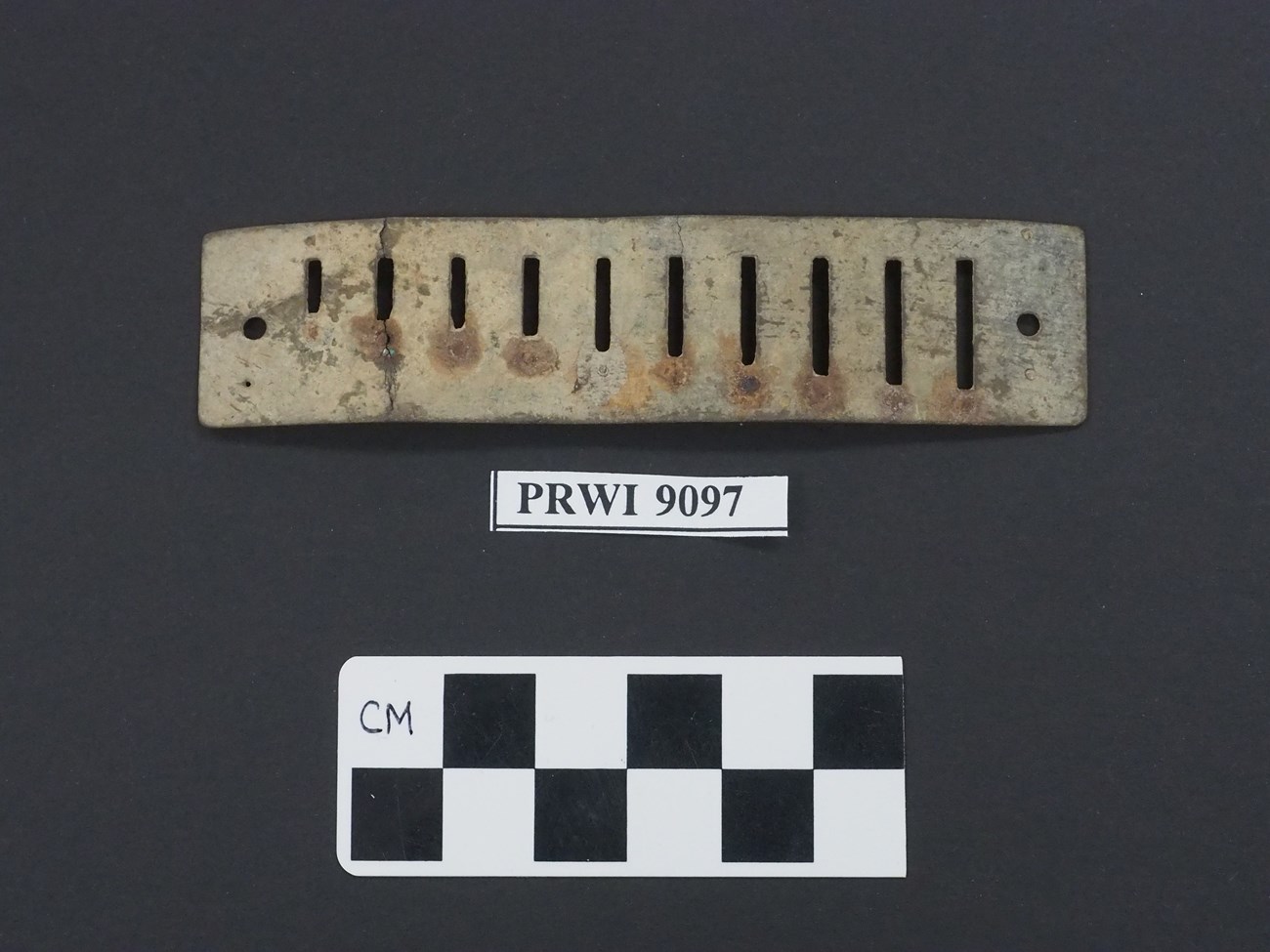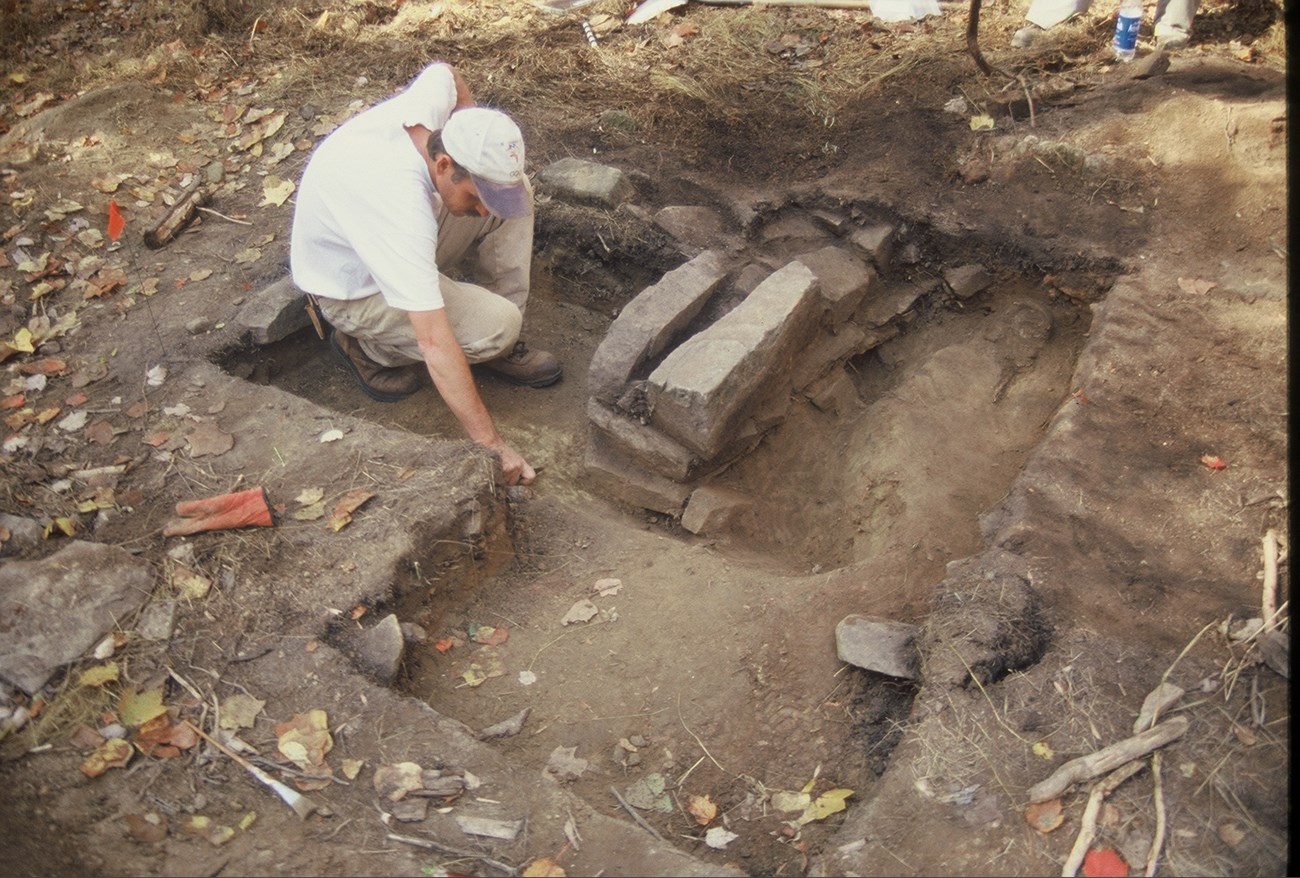Last updated: March 12, 2024
Article
The Residents of the Poor House

Each county elected Overseers of the Poor to be responsible for constructing a Poor House. Industrial work like manufacturing was not yet developed in most of America, so a workhouse was typically a farm where the residents could feed themselves. Workhouses represented a compromise between those who wanted to care for the needy and those who felt charity only worsened poverty, as many believed the real cause of poverty was the “intemperance, idleness, and vice” of the poor themselves.
The Town of Dumfries
In 1749, a group of planters and merchants founded the town of Dumfries on Quantico Creek in what is now Prince William County. Once the town was settled, it thrived as a commercial hub and political center. The county courthouse moved there in 1759, and by the Revolution the town boasted a newspaper, racetrack, and several other amenities. Despite the rapid population growth in northern Virginia throughout the eighteenth century, the population in the county remained small, hovering around 6,000 people during the American Revolution.At most, 20 families lived in this area of the park at any given time. Many were tenants who paid their rent with one hogshead of tobacco, weighing 530 pounds. The rent was the same for every household, even though the size of their parcels varied from 100 to 150 acres depending on the quality of the land. Since tobacco dominated the Virginia economy, the landscape was carved into farms matching the size of the barrels in which tobacco was shipped.
The tenants lived in wooden houses framed around ground-set posts or log cabins with shallow brick or fieldstone foundations. They had a barn for storing tobacco but few other outbuildings. They did not have wells, so they brought water from the nearest creek. The tenants’ leases required them to plant orchards of apple and pear near their houses, usually at the ends of the ridges overlooking the creek and close to their water supply. Each family fenced in their fields and orchards to keep out their free-ranging animals, who mostly fended for themselves in the woods.
This pattern of land ownership changed in the eighteenth century. The absentee landowners sold most of the large patents and these were broken up and bought by buyers such as Luke Cannon. The new owners were rooted to their own places and set up farms that were more permanent and more substantial than the tenant dwellings of years past. They amassed large estates, lived in two-story frame houses, and purchased enslaved people. The population of Virginia’s enslaved African Americans increased rapidly because enslavers profited from the sale of “excess slaves”, or enslaved children, to planters in newly developing lands.
The change to localized, owner-operated farms came about as farmers throughout the Chesapeake region shifted from raising tobacco to growing wheat. In 1815, the peak of the early wheat-farming boom, 40% of the park was actively farmed and most of the land was logged. By 1830, at least half a dozen family-owned farms had been established that were to be occupied through the twentieth century. Many houses built a one-story kitchen addition and a well close by. These farms had barns and numerous other outbuildings, most of them whitewashed frame structures, but some made of split logs. They were neater and more carefully laid out than the colonial farms that had preceded them, and some were landscaped for decorative effect. However, farmers were not the only inhabitants of what eventually became Prince William Forest Park.
Building the Poor House
On June 4, 1793, construction began on “a framed house Sixteen Feet Square with a Stone or Brick Chimney weather Boarded & Covered with Shingles and as many Logged Cabins as they may Judge Sufficient for the present.” Most of the work was done by September 1794 and the earliest surviving list of residents at the Prince William County Poor House is from 1795.Some hoped the Poor House would remove the poor from ale houses and other temptations to sin and teach them habits of discipline, frugality, and hard work. Based on this idea, one might imagine that those on poor relief were able-bodied men and women who just needed a little prodding to get out into the fields. The 1795 county records tell a different story:
James Wilky, a very deaf old man
William Martin, deaf and blind
Celia Wilkinson, very infirm
Ann Lunceford and Child
Arrabelle Baze, a blind troublesome old Woman
Elizabeth Wood, an insane Woman
Elisabeth Doughty to Assist in Washing
It is unlikely that these residents of the Poor House did much farming or lumbering, although they probably kept a garden and a few animals. The Poor House sheltered about a dozen of the county’s poorest residents, along with the “overlooker” who managed the facility.

The Poor House Site
Archeology provides another lens through which to view the Poor House’s brutal legacy. Site 44PW1130 is one of the largest historic sites in the park and encompasses the Poor House, a well-known local landmark referred to in maps, deeds, and road names. Excavations yielded fragments of iron stoves and hundreds of nails. Archeologists identified the locations of four former structures and evidence for the foundations of two others. The largest building was a one-story frame house with six rooms. Over 70 graves can be found in the associated cemetery, which are visible as depressions in the ground and occasionally marked with unshaped headstones or footstones.Near a mound of stone rubble, archeologists discovered a group of large, carefully laid stones at the east end. The large stones proved to be a chimney base of a rather peculiar shape, with rubble walls that extended north and south from the chimney. Around the base of the stones was a layer of brown loam mixed with ash, animal bone, and artifacts. These artifacts are among the oldest found on the site and suggest this structure was a barracks built early on, perhaps in the 1790s.

The decorated ceramics, bits of glass tumblers, and tobacco pipes found around the Poor House structures are very similar to those recovered from nearby family farms. In fact, no real difference exists between the ceramics found at the Poor House and those found at the Luke Cannon Plantation, an owner-operated farm occupied at the same time. The residents of the Poor House used the same kind and quality of dishes, drinking glasses, and other objects that looked much like those of their neighbors.
It is hard to tell from archeological fragments whether the dishes were chipped or cracked before being used at the Poor House, but it is likely these objects were either donated to the poor or purchased secondhand by the overseers.

Seeing the site from the perspective of people who lived there makes it easy to see why the local farmers befriended the Poor House residents, with people like Luke Cannon going so far as to donate their old tableware to the residents when the county did not provide enough essential supplies for them. Although they had few other possessions, these objects remind us that the residents were still respected as people by caring Virginians who integrated them into their close, tight-knit community.
In 1926, a welfare reformer crusading against the poor house system wrote the following about the site: "Poor farm located 13 miles south of Manassas, way back on poor, cutover land, off any traveled road, in a woods. Very few know that such a place exists."
Prince William County closed the Poor House and sold the property in 1928. The absentee owners left no evidence of occupation in the 1930s, so the Poor House site was likely abandoned. No more tenants leased this land. The welfare reformer was correct that the site was mostly unknown for decades, but archeological investigation often uncovers previously ignored places and the Poor House is no exception.

As one of the first rural poor farms established in Virginia, the Prince William County Poor House remains today a haunting reminder of the predecessor to modern social welfare programs. In a rapidly developing nation that eventually forgot all about this small, old farm in the woods of rural Virginia, county governments applied a means of control that institutionalized inequality and poverty for the already-marginalized disabled and elderly.
Sources
Bedell, John
2004 "Few Know that Such a Place Exists": Land and People in the Prince William Forest Park, Volume I. Louis Berger Group, Inc. National Capital Region, National Park Service.
Lawrence, Elyse
2009 “Prince William Forest Park Cemetery Survey 2008-2009”.
